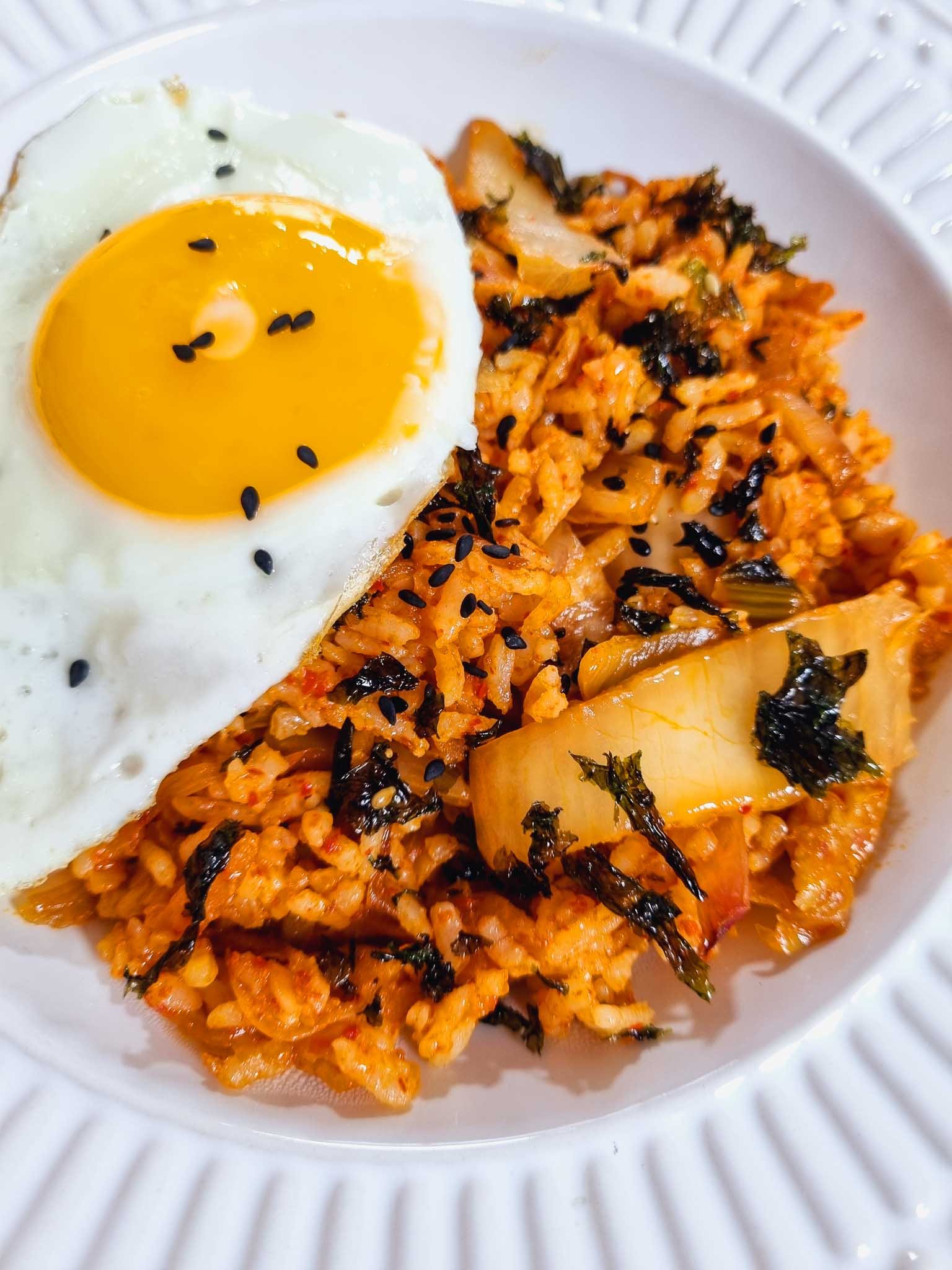
Newsletter Subscribe
Enter your email address below and subscribe to our newsletter

Enter your email address below and subscribe to our newsletter
If there’s one dish you’ve got to try soon, it’s Kimchi Bokkeumbap! This Korean dish is packed with punchy, umami-rich, flavourful ingredients!
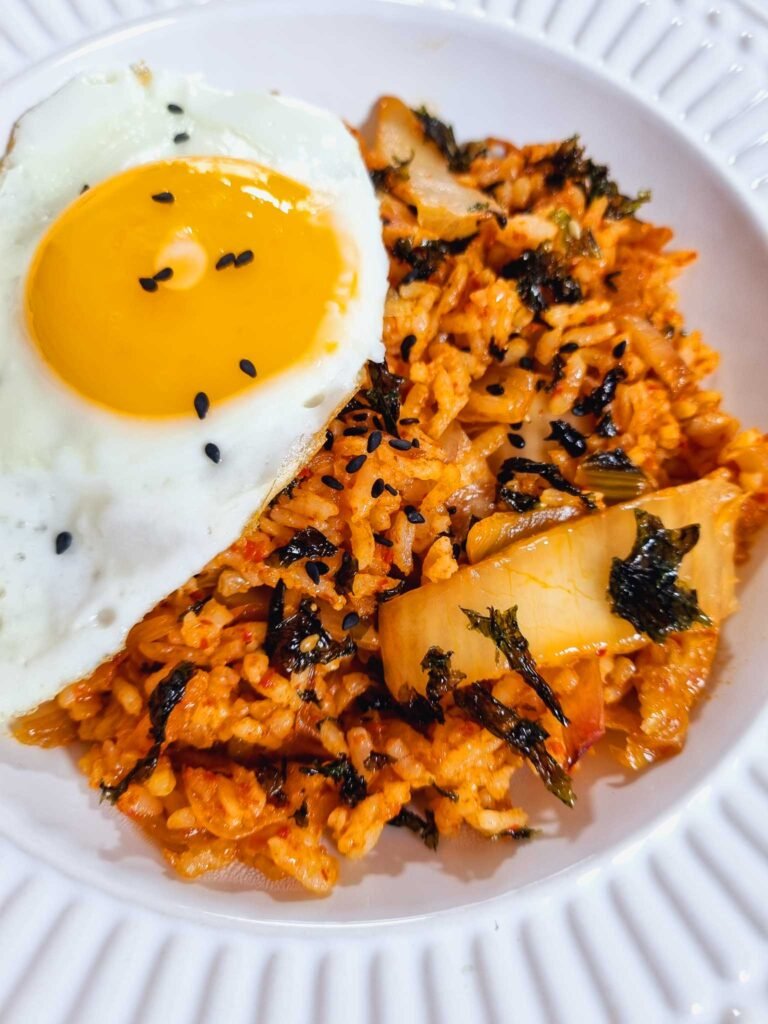
I’ve tried fried Kimchi in the past, and I enjoyed it. The Fried Kimchi came in a little can I bought from an Eastern European supermarket specializing in Korean food. However, I have to admit that I’ve been very hesitant to try Kimchi Bokkeumbap.
I am unsure why, but the overwhelming smell of aged Kimchi can intimidate many people. However, this recipe is so delicious that any hesitations you may have had will be a thing of the past. After much research, I discovered that some people make this recipe with a bit of butter. I figured that butter makes everything better, so why not? When using well-aged Kimchi sautéed in a bit of butter, the cabbage tastes slightly nutty.
On another note, the smell of aged Kimchi has become a familiar scent in our household. We were gifted so much Kimchi that it could last for years. If you’ve been keeping track of our most recent Kimchi Jjigae recipe, you will know it is time to make the revered Kimchi Bokkeumbap.
I’ve changed the recipe to add more flavour and used a different take on this recipe’s traditional and popular versions, so this is our take on Kimchi Bokkeumpap.
The Kimchi has to be well-fermented, tangy, and incredibly sour—almost to the point that it can’t be eaten as a standalone dish, although I might add that some Koreans enjoy Kimchi when it is at its most fermented stage. To make the best Kimchi bokkeumbap, you must have a mixture of finely chopped to roughly chopped bits of Kimchi.
When you stir-fry the Kimchi, the smaller pieces will develop a caramelized taste, which is where the flavour of this recipe comes from. This is a crucial step for maximum flavour. Another important factor is the high heat and a non-stick pan or wok. Using the right tools will ensure that your fried Kimchi is crispy and not soggy.
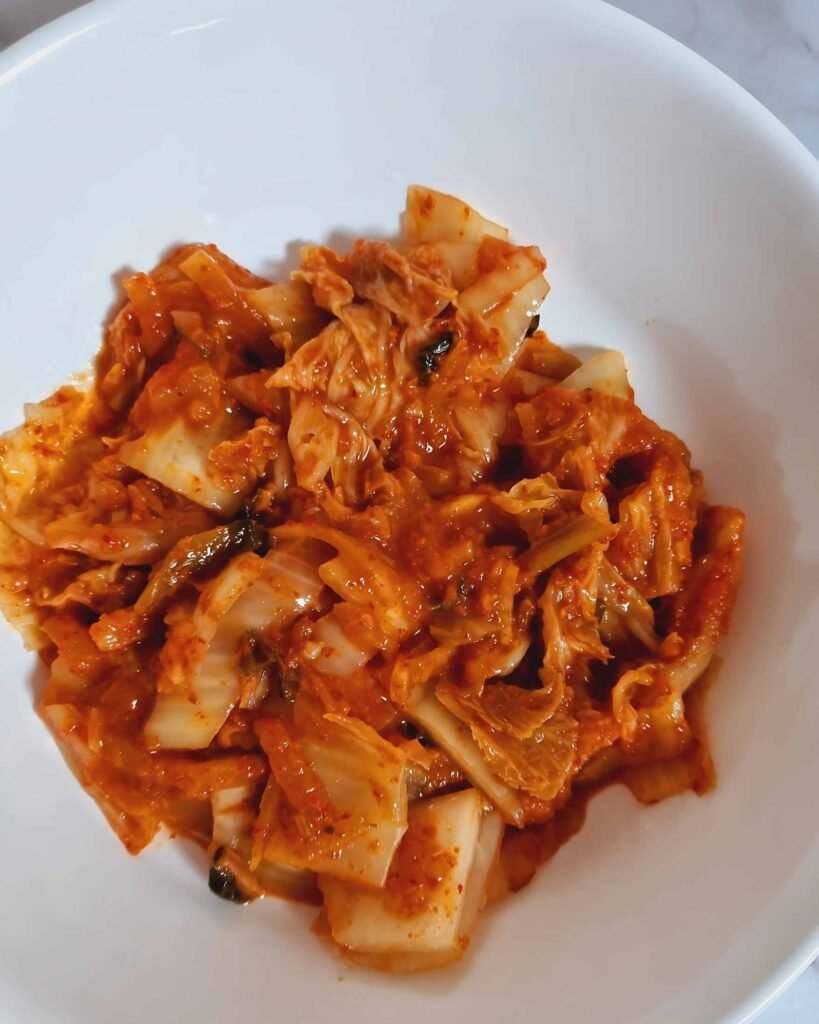
Also, stainless steel will work perfectly for this recipe. Usually, in Korea, Bokkeumbap is cooked in earthenware or iron pots. These pots are placed on an open flame along with the rice, which helps to develop the crispy bits of rice, which is known in English as scorched rice, otherwise known as nurungi in the Korean language. Cooking on an open fire or earthenware pots will produce a slightly smoky taste.
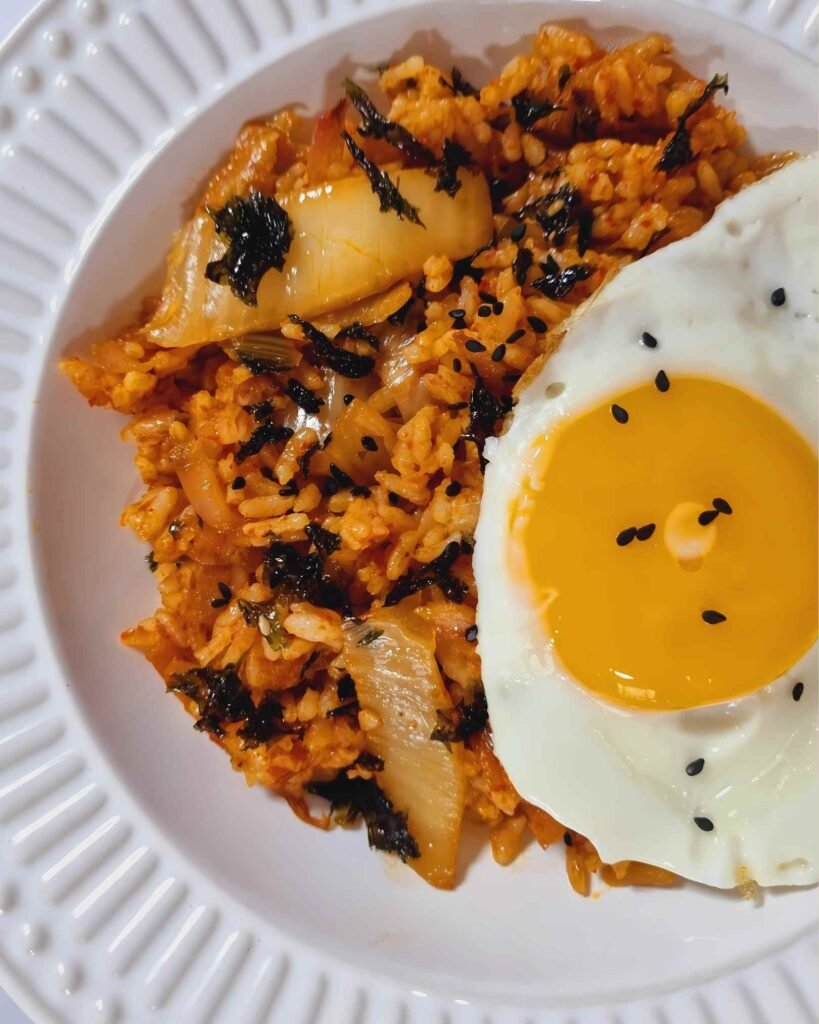
Another element of incredible Kimchi Bokkeumbap is the use of day-old rice. The rice has to be dried out and not too fluffy to create the firm structure necessary for Bokkeumbap. If you prefer more heat, you can add gochujang to this rice along with the Kimchi.
For those of you who like cheese and would like to try a modern take on this dish, many cafes in South Korea are adding Mozzarella cheese on top of the Bokkeumbap to add extra flavour. Some popular restaurants also sprinkle beef dashida to add that signature beefy taste.
Kimchi, Butter, Grapeseed Oil, Brown Sugar, Onion, Oyster Sauce, Rice, Sesame Seed oil, Garlic Cloves, Shredded Kim, Sesame seeds.
Kimchi is the main ingredient in this recipe. The best Kimchi is the one that has been fermenting in your fridge for the last few weeks. It will have a deep, tangy, and sour smell. Butter will add richness to this dish and help balance those intense flavors.
Caramelized onions and thinly sliced garlic will add a mild sweetness and crunch to this dish. Oyster sauce, which is used instead of soy sauce, adds an unusual seafood taste to the recipe.
Oyster sauce has a strong umami flavour with a subtle sweetness, whereas soy sauce has a sharp and salty taste. When Kimchi is deeply fermented, it will have sufficient salt and not require further addition. The kimchi juice will condense and create a deeply intense spiciness.
Adding a little bit of brown sugar can make a big difference in contrast to those tangy, spicy flavours.
Shredded Kim is sold at most Korean supermarkets. It is a type of roasted seaweed cut into tiny ribbon strips. Shredded Kim complements the taste of the sauce. However, regular roasted seaweed from Korea will also work for this recipe. If you’re a huge fan of seafood, you can also cook some shrimp and toss them onto the Kimchi Bokkeumbap.
Shredded Kim: You can make your own Kim by cutting ribbons from the regular roasted Kim and tossing a few sesame seeds. Sesame seed oil adds a nutty flavor, while grapeseed oil is used as a neutral oil to sauté the onions and garlic. You can also use regular cooking oil.
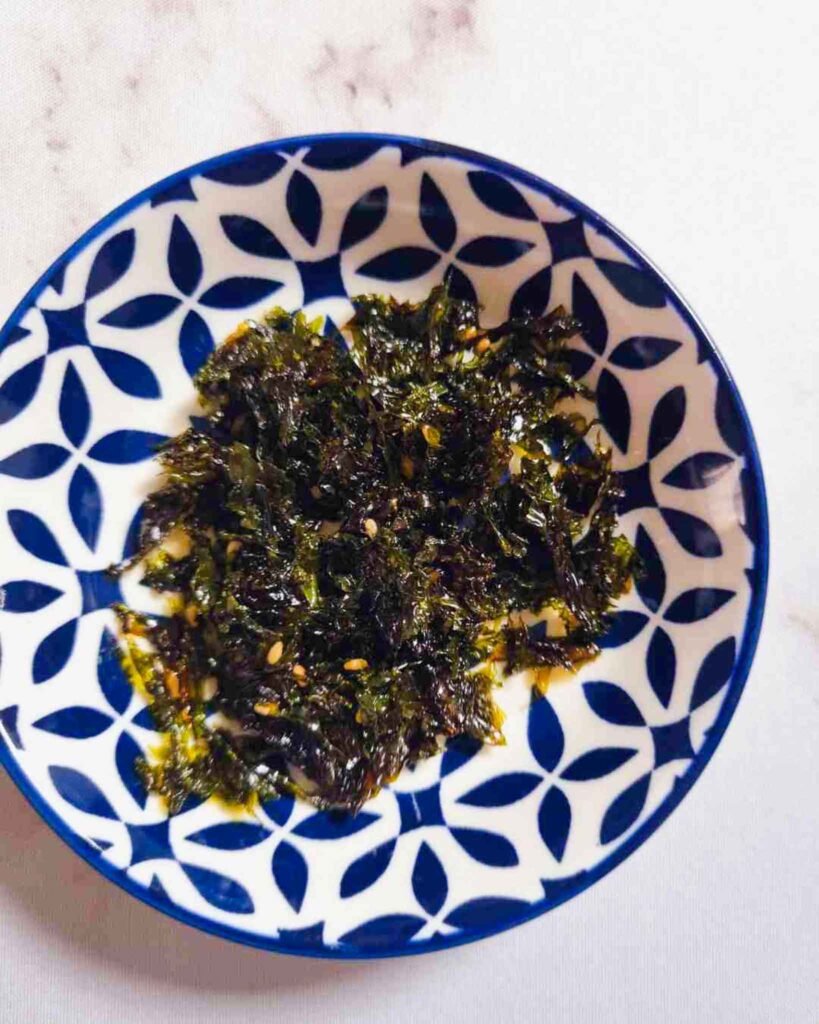
However, the sesame seed oil is a must for this recipe, especially if you want an authentic experience. Sesame seeds add crunch and serve as decorative purposes.
Prepare the ingredients by chopping the onions and garlic cloves. Slice the aged Kimchi into small and large chunks. Texture is essential in this dish, not just for the aesthetic appearance but also for the flavor. The larger bits of Kimchi will be crunchier, whereas the tiny pieces will be caramelized and crispy.
Add butter and grapeseed oil to a wok set to medium-low heat. Once the butter starts to melt and meld with the grapeseed oil, add the onions and garlic. The ingredients will caramelize for four to five minutes. Afterward, add the sliced Kimchi.
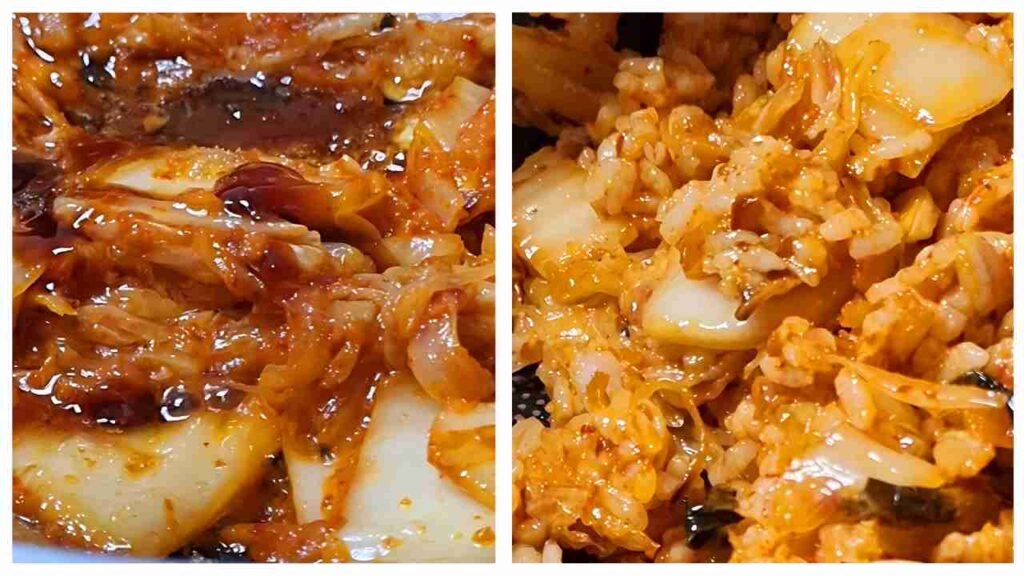
Once the Kimchi is added to the wok, stir the ingredients. Add the oyster sauce and brown sugar. Mix well. The oyster sauce and brown sugar will create a slightly syrupy texture.
As it bubbles away, it will merge with the tangy and sour flavours of the aged Kimchi, creating a powerful flavour that is uniquely different from other types of Bokkeumbap.
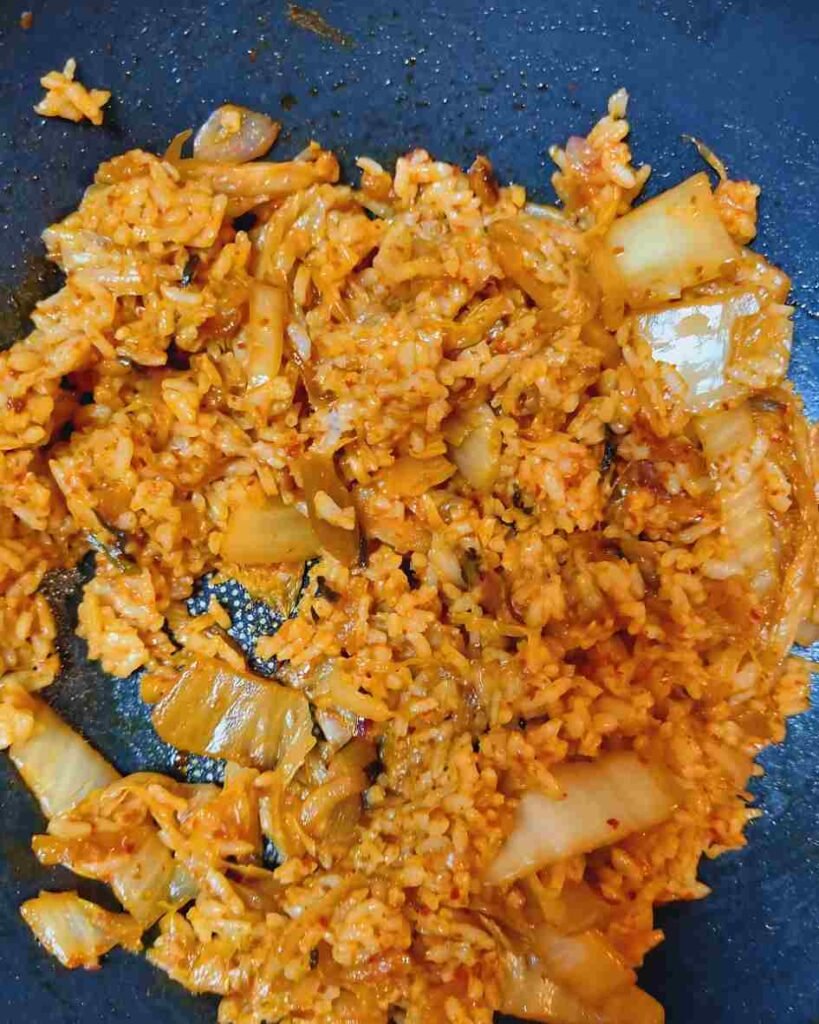
As soon as you notice that the Kimchi is browning and turning into fried Kimchi, you will know it is almost time to add the cooked rice. Wait a few minutes until most of the liquid has evaporated. Thereafter, add the cooked rice and stir well.
If the rice is one day old, it will have a perfect moisture level of semi-dry, absorbing the little bit of liquid that remains in the wok. Serve with a fried egg, sprinkle some sesame seeds on top, drizzle with sesame seed oil, and add some shredded gim.
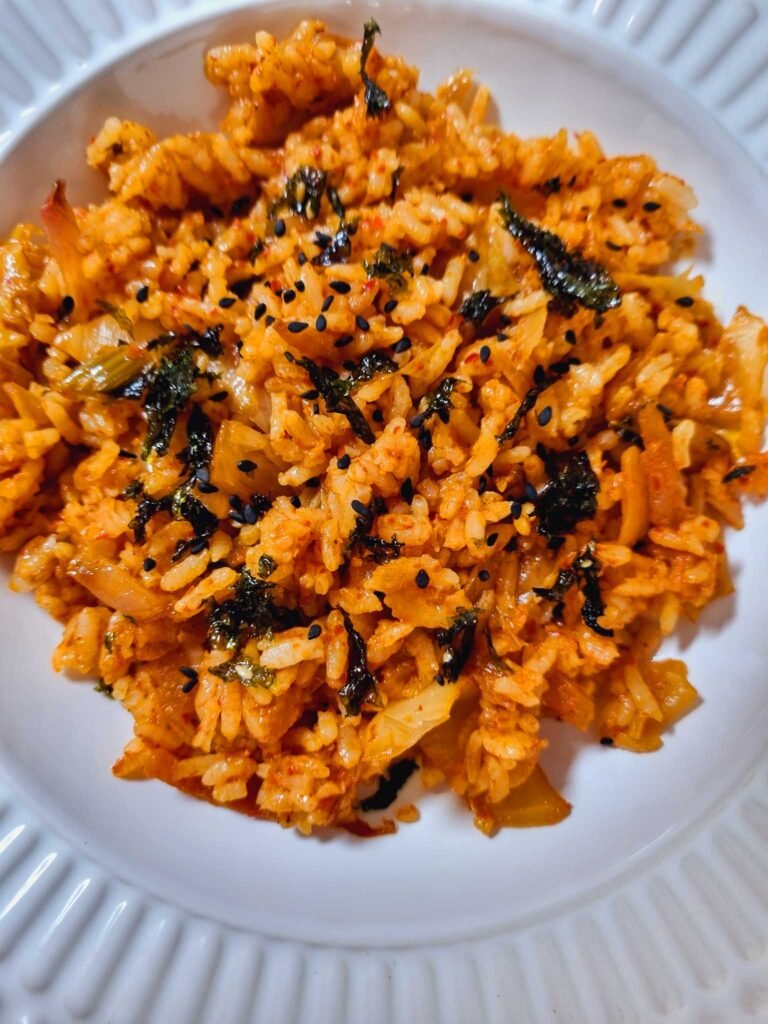
Make sure that Kimchi Bokkeumbap has sufficient time to cool down. Thereafter, store in an airtight container in the fridge for two to three days.
Did you know rice-based dishes should not be left on the countertop for over two hours?
Freezing Kimchi Bokkeubap is possible; however, most Koreans prefer to prepare it fresh. So, if you’re having Koreans over for a meal, it would be advisable not to serve any frozen leftovers but a freshly made dish.
A Fried sunny-side-up egg is often served alongside this dish. Season the eggs sparingly. Koreans also like to eat seaweed sheets called Gim or Kim. These sheets differ from Nori, the Japanese seaweed sheets used for Sushi or Kimbab.
Gim or Kim is toasted with sesame seed oil. It has a lot of flavor. Other side-dish options include Danmuji, a yellow pickled radish, and ‘Oi Muchim,’ a Cucumber salad.
If you want to add meat to the Kimchi Bokkeumbap, slice the meat thinly if you’re using beef. Add a generous amount of butter and cook the onions and garlic. Then add the meat.
Thereafter, add the Kimchi with the condiments. Make sure that the Kimchi browns up and caramelizes; this step is instrumental to the flavour of this dish. If you’re using processed meat such as salami, check the salt content and then assess the amount of seasoning necessary for the Kimchi Bokkeumbap to have a balanced flavor.
If you’re using dashida seasoning in the rice, it is recommended that you use unsalted butter to ensure that the flavours are balanced.
